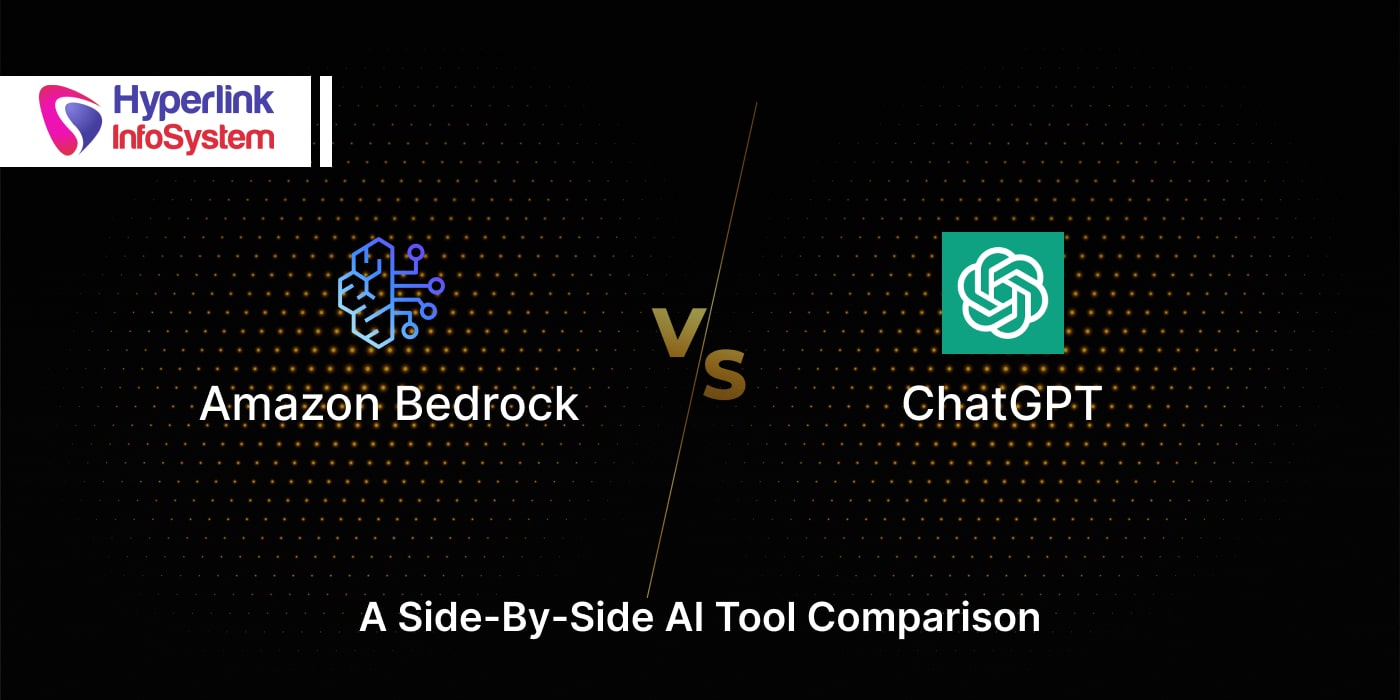Top Golang Web Frameworks You Can’t Miss in 2025
May 2024

Launched by the kingpin of technology, Google, the Golang, or Go, has become one of the premier and most versatile languages for web development. Known for its immaculate speed, navigation simplicity, and impressive efficiency, this language shines brightly due to its powerful performance. Developers around the world appreciate its holistic ecosystem of web frameworks, but choosing the right one for optimal performance is a daunting task. Golang helps with designing the best-in-class web apps that are quickly scalable, drafting bellowing REST APIs, and unleashing your creativity to another level.
The market for Golang web frameworks is not just overwhelming for new users but also equivalent to a puzzle to crack in finding which one is the best Golang web framework for web development. In this blog, we're going on a deep dive beyond the mainstream Golang development tools and analyzing the performance of the most popular ones. We'll mention their functionalities and why developers prefer them to build their web apps. If you intend to develop web apps in 2025, check out the top Golang web frameworks you can utilize.
Top Golang Frameworks in 2025
Golang web frameworks empower developers to conveniently and swiftly create APIs and web services. Mostly for simple applications, frameworks aren't a mandatory requirement but become paramount for building large and complex applications. Since the utilization of frameworks in the layers increased, the time for rushed software development vanished in thin air. It’s also advisable to consult a professional Golang development company to weigh in the pros and cons before coming to a decision. Let's check out these top frameworks that are taking the industry by storm:
1) Gin Gonic
Gin Gonic is the ultimate Golang web framework for everyone, from a beginner to a professional. This framework has earned immense appreciation for being minimalist, effortless, and 45% faster in comparison to other frameworks on the market. Gin is preferred by developers across the globe to create swift web apps due to its employment of the most rapid HTTP router for programming. From debugging management to quick handling of HTTP requests, Gin Gonic is a winner in the category of Android development projects. Inspired by the minimalistic designs of Sinatra, it's also cost-effective while containing all the vital elements needed to develop robust web applications. Gin is excellent for projects with low latency and for building RESTful APIs and microservices. It is extremely lightweight and has the lowest impact on additional tools or resources without compromising quality; hence, it is appropriate for projects requiring high performance. Being a precise framework with immaculate features and a holistic library, it enables easy project development.
2) Buffalo
Buffalo is one of the unique Golang web frameworks that prioritizes improving developer productivity over everything else. With an encyclopedic feature set, the objective of this framework is to simplify the overall web development process. Its capabilities include scaffolding tools and integrated ORM (Object-Relational mapping) for seamless database management, in addition to auto code loading for smoother development. Buffalo follows the standard over-configuration model of the framework, thereby lowering the number of boilerplate codes, encouraging developers to focus on designing features, and not waste their time on configuration complexities. Its user-friendliness and extensive documentation capability have left developers appalled across the globe. Buffalo also fosters fast onboarding with a simple learning curve, even for novice developers.
3) Echo
Echo is one of the most flexible Golang web platforms to ever exist. Efficiency, simplicity, and power performance are the only three words needed to define this platform's overall capability. It hosts a lightweight toolkit that is scalable for crafting optimal web-based applications. Echo offers fast routing that's suitable for projects that need quick response time. Developers praise its uncomplicated API and swiftness of handling HTTP requests, for faster development. Echo is also known for being a leader in supporting middleware, enabling developers to integrate a myriad of extra components such as error handling, logs, or logging. Its user-centric design is appealing and its capability to discover a settlement between the simple and powerful functionalities makes it among the top 10 competitors in the Golang web framework market.
4) Beego
Inspired by the incredible Django, Beego is a comprehensive web framework. It renders a holistic MVC (Model-View-Controller) architecture, that is preferred by many developers who like a structured strategy for web development. Beego's MVC pattern is easier for code maintenance and separating concerns. The framework's primary focus is developer productivity as well as full-stack development. Beego offers automatic routing capabilities, that eradicate the need for manual route definitions. It includes an Object-Relational mapping (ORM) system, that is suitable for streamlining interactions between databases. Beego's rich feature set drives it fit for building elaborate web applications quickly. It utilizes modular design and has helped many developers to systematize their applications to boost the upkeep and reuse of code.
5) Fiber
Inspired by Express.js (Node.js framework) Fiber is a prominent Golang web framework known for its elevated performance with a modern API. Loaded with asynchronous routing, its primary focus lies on scalability and performance. It was introduced in the market as a lightweight alternative to other heavy frameworks. Fiber comprises an incredibly powerful routing engine and is one of the most efficient frameworks available in the industry. It minimally approaches features to confirm its uncomplicated operation while rendering robust Golang development tools for programmers. Fiber's design foundation lies in its performance, due to its lowest memory allocation and rapid HTTP routing, which makes it the perfect choice for quick projects and other efficient web-based apps. It's based on the Fasthttp library, and Fasthttp, hence, is seamless in managing urgent HTTP requests.
6) Revel
Revel is a highly comprehensive Golang web framework, with fully functioning capabilities that doesn't require third-party plugins to carry out complex activities. You don't need any additional setup to execute it, hence, offers the ideal means of creating APIs with elaborate features. Revel accelerates the development project due to being self-sufficient, hence, enjoyed by many developers across the world. It boasts of a Model-View-Controller (MVC) architecture and an extensive toolkit loaded with exceptional features. Its MVC design pattern helps in proactive code management, and also auto-reloading codes. Revel's major capabilities include strong routing systems and built-in aids for multiple elements, including session management, validation, and form handling. Its convention-based approach enables developers to eradicate boilerplate code and creatively design dynamic user interfaces that are reactive. Revel is also beneficial for CMS, where its modular structure helps facilitate of crafting of scalable and effortlessly sustained systems.
7) Kit
Go Kit is majorly a set of Golang libraries for constructing microservices and distributed systems. You can also use it for crafting elegant monoliths. It is inclusive of some of the best practices to provide a whole and reliable technique for building microservices regardless of the scope of the project or company's capacity. Kit has several interconnected packages that collectively deliver an opinionated framework for designing large service-oriented architectures. This makes Go a full-fledged framework when it comes to constructing microservices. Even though Go is your mainstream language, microservices offer a specific level of special support for it. It is the only kit that authentically demonstrates RPC (Remote Procedure Call) safety, system observability, and overall infrastructure integration. Kit was mainly built for interoperability, but companies can choose the databases, platforms, architecture, and components that work better for them.
8) Iris
Whenever you hire Golang developers for smaller projects, Iris is one of the swift, straightforward, and lightweight Golang frameworks they'll recommend first. It offers exceptional capabilities such as MVC design, API versioning, dependency injection, web sockets, and many more. Iris encompasses many key libraries like express-session, Morgan, Passport, body-parser, and so on. The Go web framework's simplicity enables you to augment it with your choice of libraries and also allows the successful incorporation of third-party libraries into their assignments. Just like Beego, Iris also offers MVC support for large projects, and its automatic API versioning streamlines the procedure of adding new integrations by inserting them in more recent route versions. Its quick and smart compression lets you have speedier performance, and can also offer faster testing if integrated with NGROK.
Conclusion
In the end, a huge assortment of Golang web frameworks for apps provides developers with the liberty of choosing their choice of tool to meet project-specific demands. Each Golang development tool brings its own set of capabilities and uniqueness to the game. Developers can either pick lightweight yet robust solutions or choose something structured for modular design and better developer productivity. The Golang ecosystem is nothing less than a disruption in terms of framework growth by solving the challenges faced by today’s microservices.
Golang frameworks boast of holding leverage for providing top-notch performance capability, whether it's for crafting custom cross-platform interfaces or just native web development solutions. GoLang is comparatively a competitive alternative for C and C++ programming languages. Even though the language is currently in its developing phase, many Golang development companies, like Hyperlink InfoSystem, assist enterprises and IT companies in outsourcing their Golang services. Whether you need help hiring Golang developers or are looking to progress your web application development, our seasoned professionals have the right amount of knowledge and expertise to take your ideas virtual.
Frequently Asked Questions
Gin is one of the best IDEs and tools for Golang development available in the market. It's a completely performance-focused web framework and is extremely faster than many market competitors. It's design and interface are minimalistic and user-friendly, and ideally suited for developing small and focused apps.
Some of the most utilized Golang web frameworks for web application development are:
- Revel
- Beego
- Gin Gonic
- Martini
- Mango
- Echo
- Buffalo
- Goji
- Gorilla
Fiber is a holistic Go web framework that performs close to Express.js. It's known to be one of the fastest Golang development tools with amazing features like extensive routing and low memory usage. Fiber is constructed on top of the Fast HTTP engine for Go, and hence, a popular Go framework for speed.
Latest Blogs

Is BlockChain Technology Worth The H ...
Unfolds The Revolutionary & Versatility Of Blockchain Technology ...


IoT Technology - A Future In Making ...
Everything You Need To Know About IoT Technology ...

Feel Free to Contact Us!
We would be happy to hear from you, please fill in the form below or mail us your requirements on info@hyperlinkinfosystem.com
Hyperlink InfoSystem Bring Transformation For Global Businesses
Starting from listening to your business problems to delivering accurate solutions; we make sure to follow industry-specific standards and combine them with our technical knowledge, development expertise, and extensive research.
4500+
Apps Developed
1200+
Developers
2200+
Websites Designed
140+
Games Developed
120+
AI & IoT Solutions
2700+
Happy Clients
120+
Salesforce Solutions

40+
Data Science


















